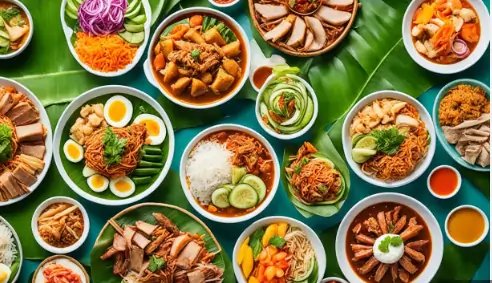
Table of Contents
10 Traditional Filipino Dishes Every Foodie Must-try
Filipino cuisine is often overlooked in favor of other Southeast Asian favorites like Thai or Vietnamese dishes, but to miss out on Filipino food would be a mistake. With its rich history and cultural influences from Spain, China, and the indigenous peoples of the Philippines, Filipino food boasts an incredible diversity of flavors and textures.
Whether you’re a seasoned food enthusiast or new to Filipino cuisine, here are 10 Traditional Filipino Dishes that every foodie should know and try.
1. Adobo – The National Dish of the Philippines
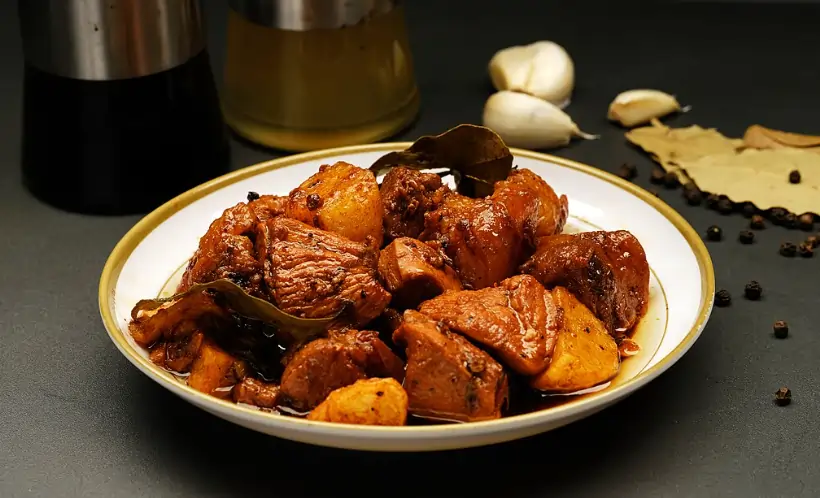
Adobo is undoubtedly the most well-known Filipino dish. It features meat, typically chicken or pork, marinated in vinegar, soy sauce, garlic, bay leaves, and black peppercorns. The meat is simmered until tender, and the sauce thickens into a deliciously tangy and savory blend.
While variations of Adobo exist throughout the Philippines, it remains a staple comfort food that showcases the Filipino love for bold flavors.
2. Sinigang – A Tangy, Savory Soup
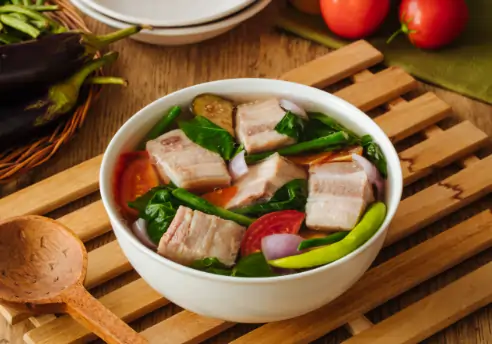
Sinigang is a quintessential Filipino dish that combines a savory broth with a refreshing tang from tamarind or other souring agents like green mangoes or calamansi. Often made with pork, shrimp, or fish, the soup is packed with vegetables such as kangkong (water spinach), radish, eggplant, and string beans.
Sinigang is the perfect dish to enjoy on a rainy day, offering warmth and comfort with every spoonful.
3. Lechon – The Ultimate Filipino Feast Dish
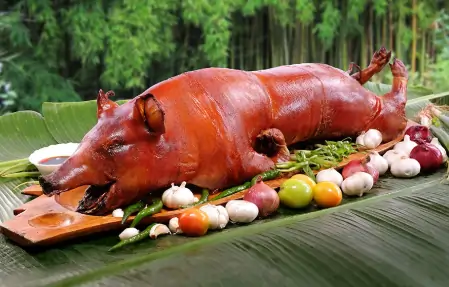
Lechon, or roasted whole pig, is often the centerpiece of Filipino celebrations and feasts. The pig is marinated with a combination of spices and herbs, then slow-roasted over an open flame until the skin is crispy and the meat is tender and juicy.
This dish is so popular that lechon is synonymous with grand gatherings and special occasions in the Philippines. Whether served with a soy-vinegar dip or enjoyed on its own, lechon is a true culinary experience.
4. Lumpia – Filipino Spring Rolls
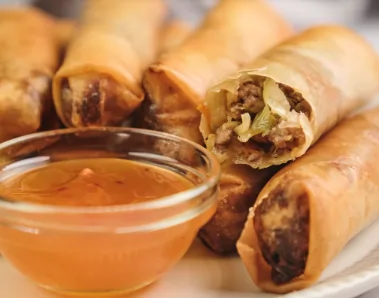
Lumpia is a Filipino version of spring rolls, and it comes in two main forms: fresh (lumpiang sariwa) and fried (lumpiang shanghai). Lumpiang shanghai is typically filled with a savory mixture of ground pork, shrimp, and vegetables, then deep-fried until crispy.
On the other hand, lumpiang sariwa is a fresh spring roll filled with vegetables, garlic, and meat, wrapped in a soft, thin crepe, and topped with a sweet, garlicky peanut sauce. These bite-sized treats are perfect for snacking or as part of a larger meal.
5. Kare-Kare – A Rich, Peanut-Based Stew
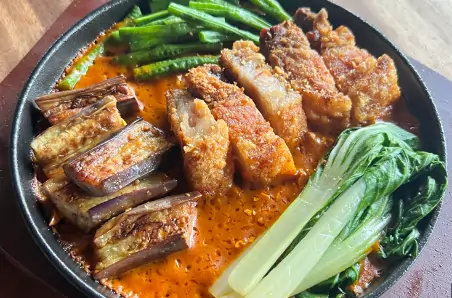
Kare-Kare is a Filipino stew known for its rich, peanut-flavored sauce. Traditionally made with oxtail, tripes, and vegetables like banana hearts, eggplant, and string beans, the dish is typically served with a side of shrimp paste (bagoong) to enhance its savory and slightly salty flavor.
The creamy texture and unique taste make Kare-Kare a favorite dish for many Filipinos, often enjoyed during celebrations and family gatherings.
6. Pancit – A Symbol of Long Life

Pancit refers to Filipino noodle dishes, and each variety has its own unique flavor and preparation. Pancit Malabon is known for its thick rice noodles and savory shrimp-based sauce, while Pancit Canton features stir-fried egg noodles with vegetables, meat, and shrimp.
Pancit is a symbol of long life and is traditionally served at birthday parties and other milestone events.
7. Halo-Halo – A Refreshing Filipino Dessert
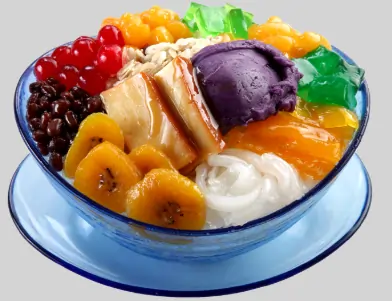
Halo-Halo is a popular Filipino dessert that brings together a colorful mix of shaved ice, sweetened fruits, beans, jellies, and a scoop of ube ice cream. Topped with leche flan and a drizzle of evaporated milk, this vibrant treat is a refreshing and indulgent way to end any meal, especially on a hot day.
The combination of textures and flavors makes Halo-Halo a beloved favorite among locals and visitors alike.
8. Bicol Express – A Spicy, Creamy Delight
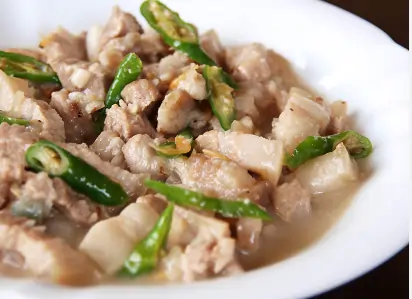
Named after the Bicol region, Bicol Express is a spicy dish made from pork, shrimp, or fish simmered in coconut milk, chilies, and shrimp paste. This dish is a perfect balance of creamy richness and spicy heat, and it embodies the flavors of the Bicolano region, which is known for its love of chili and coconut-based dishes.
For those who enjoy bold, spicy flavors, Bicol Express is a must-try.
9. Leche Flan – The Sweet Filipino Custard
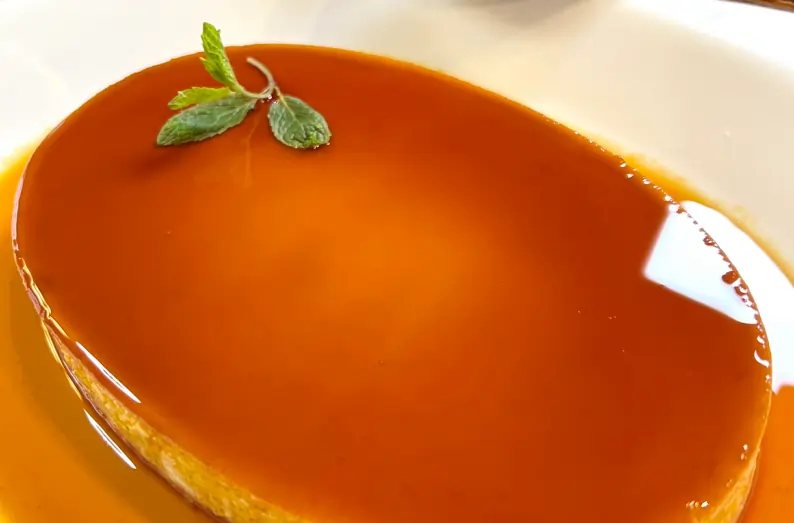
Leche Flan is a rich, creamy Filipino custard dessert made from eggs, sugar, and condensed milk.
It is typically steamed until it achieves a smooth, velvety texture. Caramelized sugar is poured over the flan before it is steamed, giving it a sweet, golden finish. Leche Flan is often served at festive occasions and is a dessert that showcases the Filipino love for sweet, indulgent treats.
10. Puto – Filipino Steamed Rice Cake

Puto is a Filipino steamed rice cake made from rice flour, sugar, and coconut milk.
It is typically served as a side dish or snack and is often topped with cheese or salted eggs for extra flavor. Puto is often enjoyed with savory dishes like dinuguan (pork blood stew) or can be eaten on its own as a sweet treat. This soft, slightly sweet cake is a favorite during celebrations and casual gatherings.
Conclusion: The 10 Traditional Filipino Dishes
Filipino food is a vibrant reflection of the country’s history, diverse culture, and regional flavors. From savory, tangy stews like Sinigang and Adobo to the refreshing sweetness of Halo-Halo and Leche Flan, Filipino cuisine offers a unique experience for any food lover.
While it may not always take center stage on the global culinary scene, Filipino food deserves a spot on every foodie’s must-try list. So, the next time you’re looking to try something new, don’t overlook the incredible flavors of the Philippines.
FAQs
What is the most popular Filipino dish among the 10 Traditional Filipino Dishes?
Adobo is considered the most iconic Filipino dish among the 10 Traditional Filipino Dishes, widely enjoyed by locals and visitors alike for its savory and tangy flavor profile.
What is the difference between lumpia shanghai and lumpia sariwa?
Lumpia shanghai is a crispy, fried version filled with meat and vegetables, while lumpia sariwa is a fresh spring roll served with a sweet, garlicky peanut sauce.
What are the key ingredients in Kare-Kare?
Kare-Kare is a peanut-based stew often made with oxtail, tripe, and various vegetables such as eggplant, string beans, and banana hearts, served with shrimp paste on the side.
Disclaimer
The 10 Traditional Filipino Dishes and descriptions mentioned here are based on traditional Filipino recipes, but variations may exist depending on regional and personal preferences.
The ingredients and methods of preparation may also change over time, reflecting the evolving tastes of Filipino cuisine. Always check with local chefs or food experts for the latest variations.
TechWirings does not endorse or explicitly support any views or actions expressed in this content.











